Disclaimer: This blog post contains affiliate links. If you make a purchase through these links, I may earn a small commission at no additional cost to you. Learn More. Thank you for supporting our garden community.
10 Delicious Sweet Pepper Varieties You NEED to Grow
Sweet peppers are a favourite among gardeners for their vibrant colours, crisp texture, and sweet, mild flavour. Whether you’re stuffing them, roasting them, or eating them raw, growing a variety of sweet peppers can take your garden harvest to the next level. In this post, we’ll explore 10 of the best sweet pepper varieties and offer tips for growing them successfully.
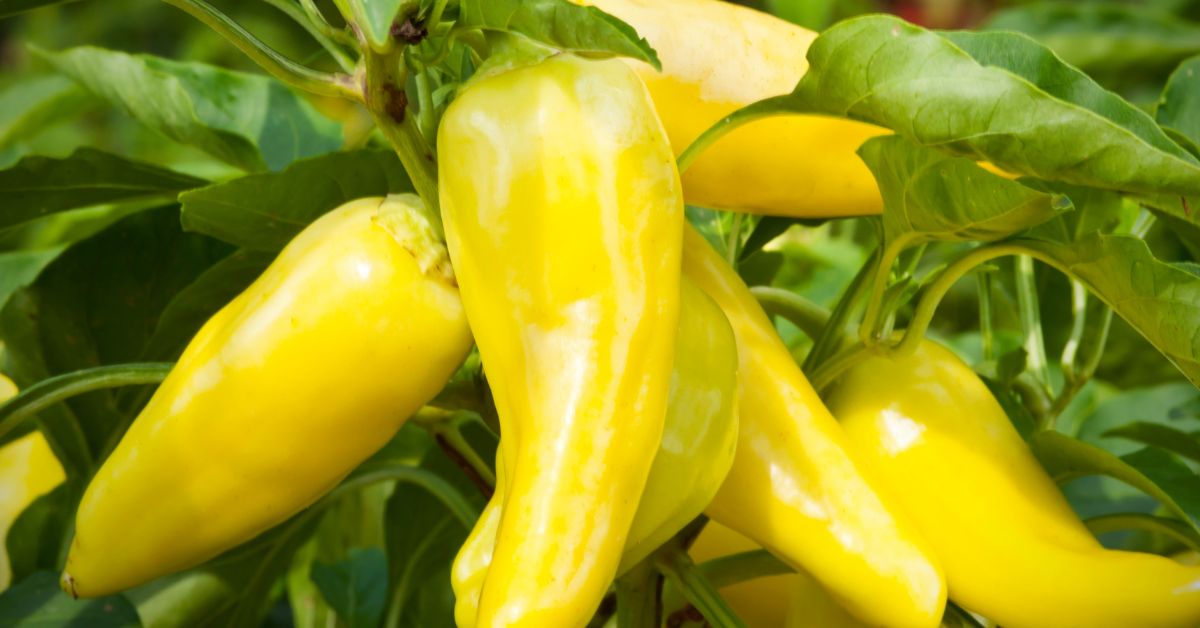
Sweet Pepper Varieties You NEED to Grow
I have the feeling that a lot of new gardeners are intimidated to grow sweet peppers. I don’t really know why, maybe because they’re generally bigger than spicy peppers.
But I do agree that spicy peppers are easy to grow and they can produce a ton of peppers.
Sweet peppers are great too though, especially with all the different varieties.
So with that being said, lets get right into 10 sweet pepper varieties you NEED to grow.
Products:
Save 10% on your first Burpee seed order using code BURPEE10
What are the Different Types of Sweet Peppers?
There are many different categories of sweet peppers, each with their own shape and size:
- Bell Peppers: These are the classic sweet peppers that are found almost anywhere. They are blocky and thick-walled, making them perfect for stuffing and fresh eating.
- Banana Peppers: Another popular group, banana peppers are long and tapered at the end. They’re usually yellow, which is why they’re called banana. These peppers are perfect for pickling and grilling.
- Frying Peppers: As the name suggests, the thin skin of these peppers makes them perfect for frying and sauteing. They are very long and slender, and don’t have as much water as other varieties.
- Mini Peppers: These peppers are one or two-bite-sized that are sweet and perfect for fresh eating. Because they’re so small, one plant can produce a lot of peppers.
- Ramshorn Peppers: Pronounced “ram’s horn,” not “ram shorn,” and also known as bullshorn. These peppers are shaped like an animal’s horn and are great for roasting and fresh eating.
Difference Between Sweet and Spicy Peppers
Like I said before, many gardeners have grown spicy peppers in their garden before.
The main difference between the two types (and the namesake) is the presence of capsaicin. Capsaicin is the compound responsible for the spiciness in spicy peppers.
Of course, spicy peppers contain capsaicin, with varying amounts depending on the variety.
On the other hand, sweet peppers have zero or very little capsaicin, which makes them sweet. Some varieties might have a little bit that’ll make them very slightly spicy, but still.
And if you get a sweet pepper variety that has very weak genetics or is a new variety on the market, then it can occasionally produce a pepper that is spicy. This is not very common though.
Apart from capsaicin levels, there are also some differences in growth habit.
You may notice the first one if you’re growing peppers from seed, and it’s that sweet peppers germinate way faster than spicy peppers!
Sweet peppers usually germinate in a week or two, while spicy peppers can take 4-5 weeks.
Additionally, sweet peppers usually have larger leaves than spicy peppers.
Can Sweet and Spicy Peppers Mix Flavours?
This is one of the most common misconceptions when growing peppers.
A lot of gardeners are afraid to plant sweet and spicy peppers in the same garden bed because they think the sweets will become spicy and vice versa.
Maybe by the roots mingling or the pollen mixing, the spiciness would somehow transfer to the other varieties. I don’t know, it’s truly a mystery!
But this is just not true; it can’t be true. Each plant is separate, they can’t suddenly mix or combine.
Sweet peppers and spicy peppers planted next to each other will taste exactly how they’re supposed to taste when harvested.
However, there might be a problem if you’re trying to save seeds for next year.
If pollen does get transferred between varieties, then it will create a hybrid in the seeds of the fruit, not the fruit itself.
So if you plant those seeds next year, you’ll get a really weird variety that probably won’t taste or look good. It might be spicy, it might be sweet, I don’t really know.
But for this generation of fruit, there won’t be any mixing, so you can plant sweet and spicy pepper varieties next to each other without an issue.
Why Grow Sweet Peppers
I don’t know about you, but peppers are expensive where I live. Regular price is around $4.99/lb. That’s way too much.
You can save so much money growing sweet peppers at home. And I usually don’t even buy them during the winter because I’d rather have them fresh in the summer.
And it doesn’t even have to be said, but homegrown peppers taste way better than store-bought.
You’ll never be able to find anything comparable to homegrown produce, especially peppers.
So grow your own sweet peppers this year!
10 Delicious Sweet Pepper Varieties
Now let’s get into my list of my 10 favourite sweet pepper varieties that you need to grow!
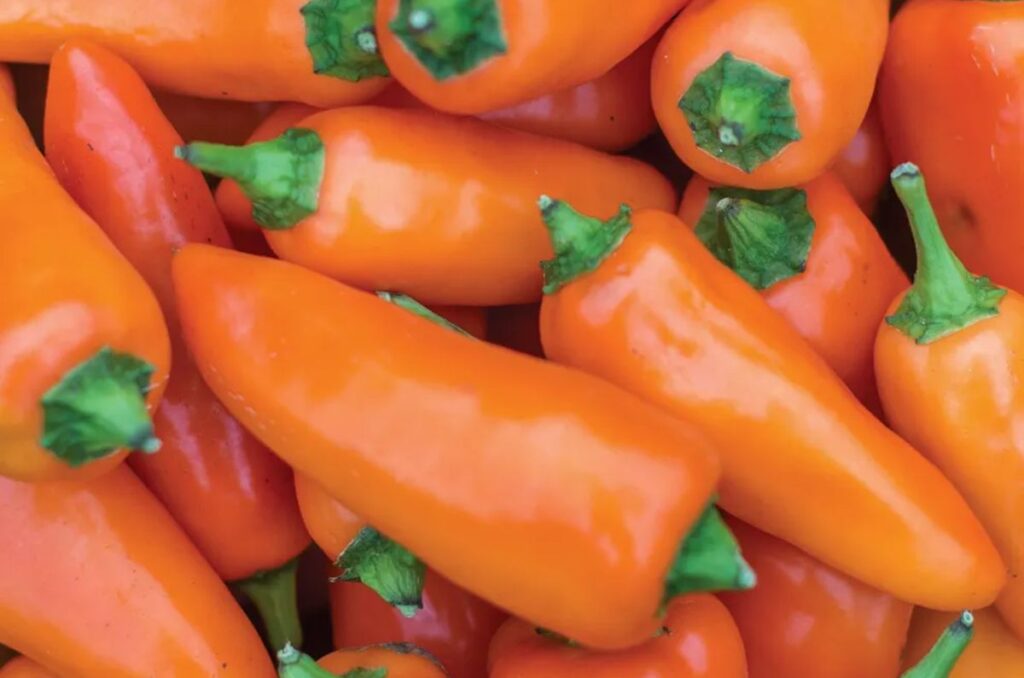
1. Tangerine Dream
As the name suggests, this snacking pepper has a beautiful tangerine orange colour.
This is a snacking pepper that produces fruits that are about 3 inches long. They’re perfect for fresh eating and pickling, and they have a very sweet taste.
Sometimes the fruits can develop a bit of spiciness, so be careful.
The plants grow to about 18 inches tall and 12 inches wide, making them perfectly compact plants.
It’s a new variety for my garden this year as well.
Days to maturity: 70
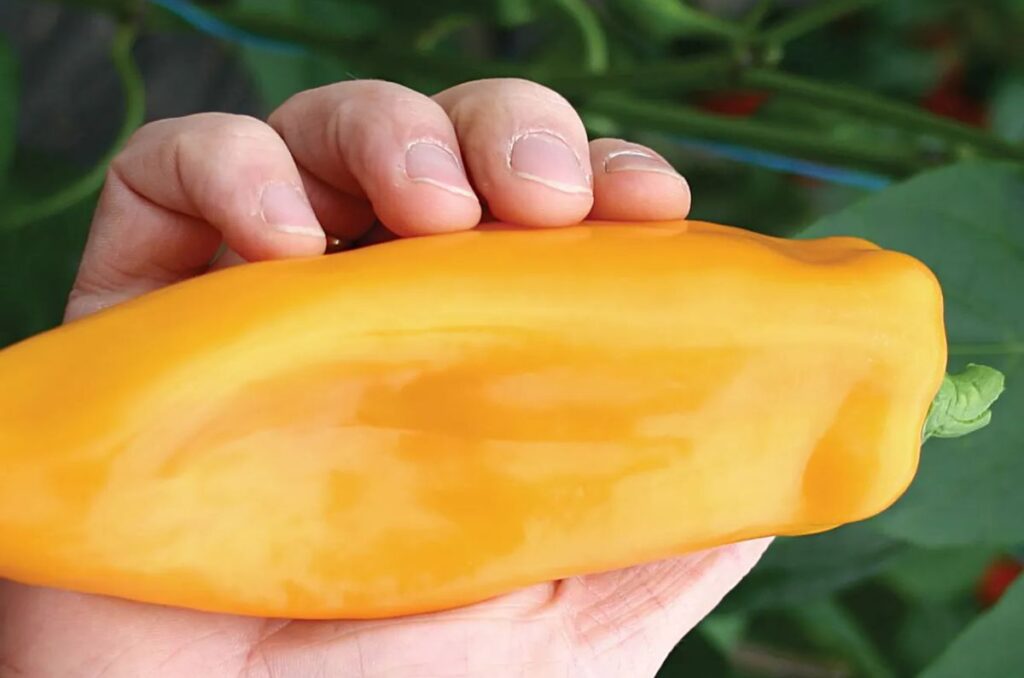
2. Big Daddy
Big Daddy is truly a huge sweet pepper variety. Fruits grow to about 8-10 inches long, and they’re thick-walled and glossy golden yellow.
They are easy to harvest off plants that are about 18-24 inches tall and 12 inches wide.
And they’re perfect for stuffing and roasting. They hold up very well after being cooked and won’t fall apart easily.
Days to maturity: 73
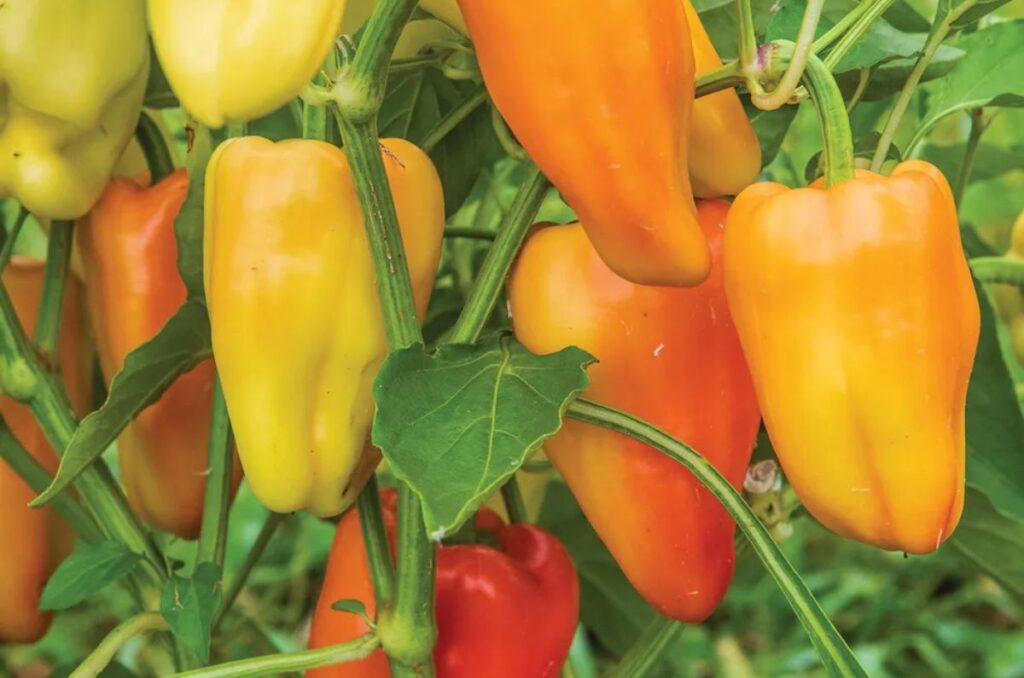
3. Gypsy Hybrid
This is another new variety for my garden this year.
It’s an All-America Selections winner that is very prolific and produces a ton of fruit from just one pepper plant.
The tapered fruits grow to about 4.5 inches long and mature from a yellow-white colour to orange to red. They’re best picked at the orange stage.
They’re perfect for frying and fresh eating in salads.
Plants grow to about 18-24 inches tall and 12 inches wide.
Days to maturity: 65
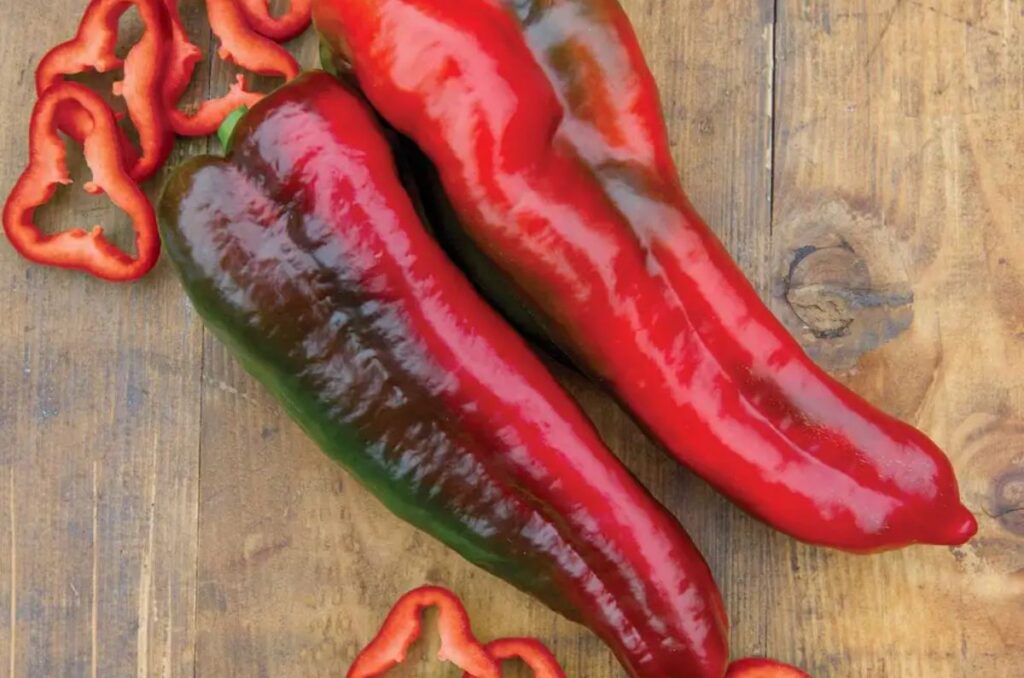
4. Thunderbolt
A variety with a very intriguing name, thunderbolt is a prolific producer. The fruits average 10-13 inches long and is considered one of the most flavourful varieties.
The plants are about 40-45 inches tall and 35-40 inches wide, so considerably larger than the previous varieties.
The tapered fruits are perfect for frying and stuffing.
Additionally, this variety shows reliable resistance to tomato spotted wilt virus and tobacco mosaic virus.
Days to maturity: 65-80
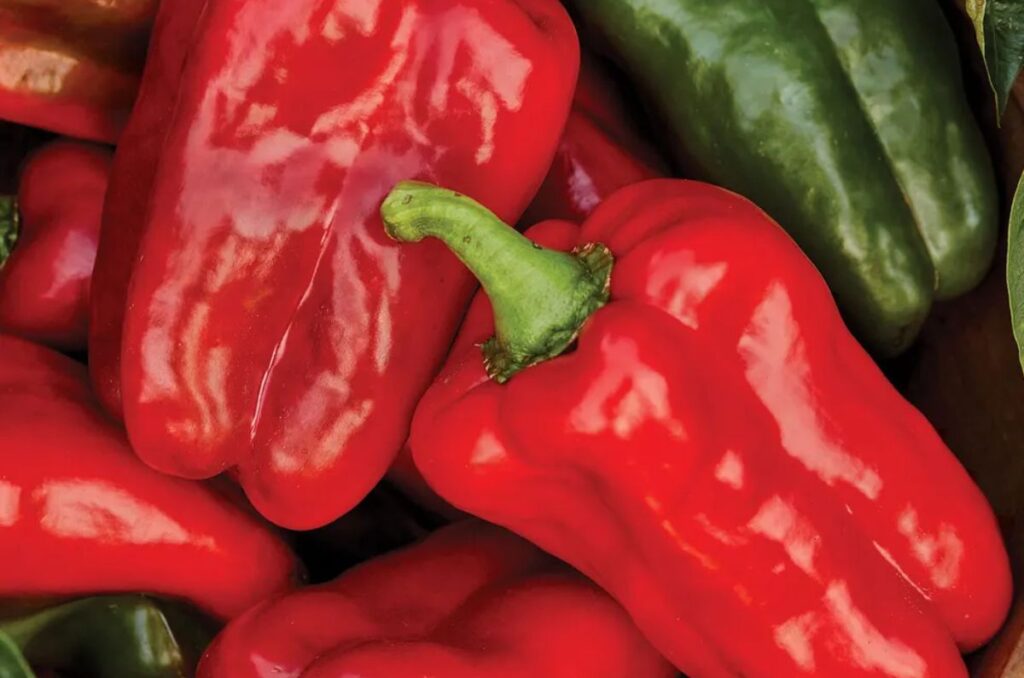
5. Great Stuff
This variety produces huge peppers that are 7 inches tall and 5 inches wide. This makes the perfect for stuffing because they can hold a lot of stuff in there!
The fruit ripens from green to a dark red colour when fully ripe.
They are very productive and generally produce a good yield no matter what the conditions are.
Plants grow to about 18-24 inches tall and 12 inches wide.
Days to maturity: 75
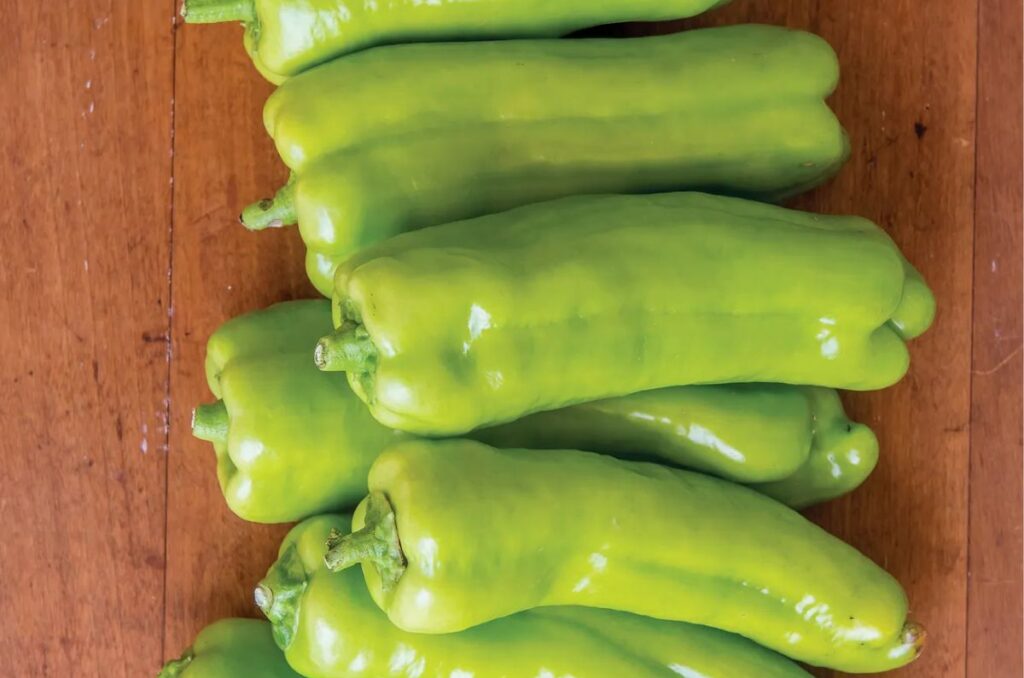
6. Long Tall Sally
Another Italian frying pepper that is so versatile and perfect for frying, grilling, roasting, and even stuffing. The skin is thin and the fruit is sweet.
They produce an abundance of 8 inch long Cubanelle-style fruits.
Plants are about 40-45 inches tall and 30-35 inches wide and it’s one of the fastest-maturing varieties.
Days to maturity: 60-65
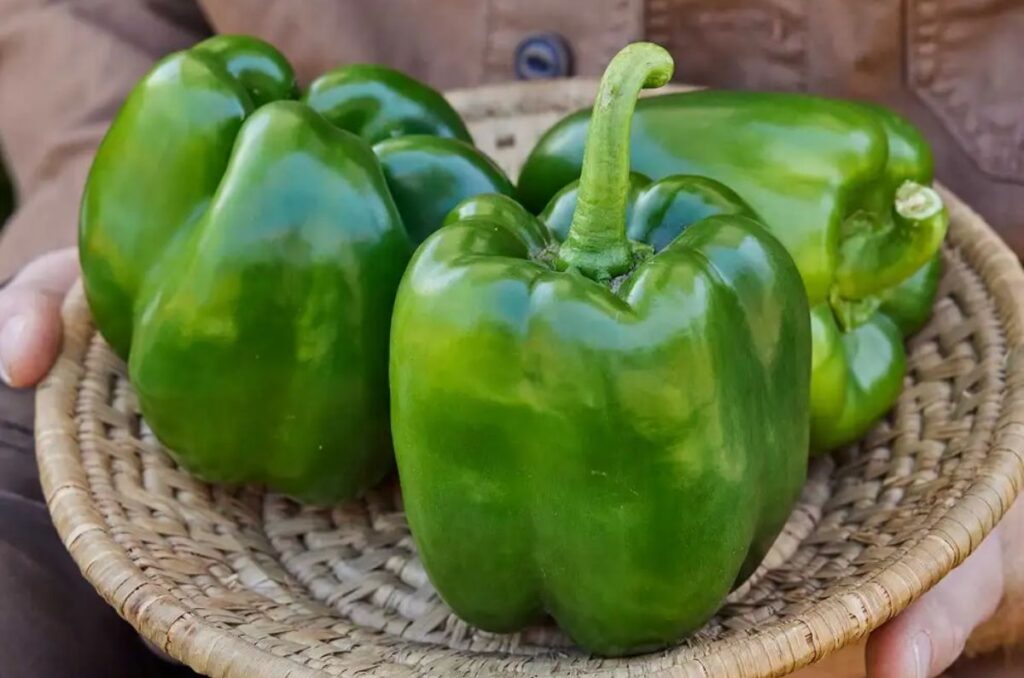
7. Emerald Giant
This huge blocky bell pepper variety is an heirloom, meaning you can save and replant the seeds next year for the same variety.
It produces heavy yields of 5 inch long peppers best harvested when they’re dark green. However, you can let them ripen to red.
They have a sweet and juicy flavour, thick walls, and crisp texture.
Plants are 26-30 inches tall and wide, and produce fruit over a long period in the summer.
Days to maturity: 72-80
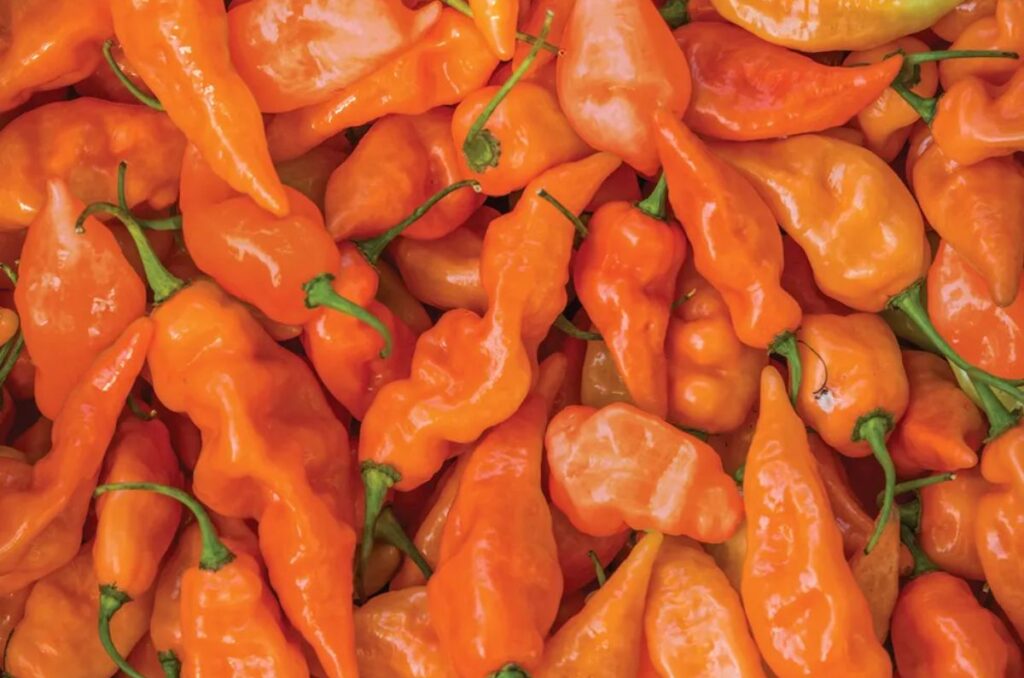
8. Habanero Habanada
This is the first habanero variety that has no heat. It’s a heat-less habanero pepper.
Instead, it gives you sweet, tropical, and fruit flavours perfect for fresh eating and frying. This variety is extremely productive and early-maturing.
Plants grow to 13-15 inches high and 24-36 inches wide, and the fruits are about 3-4 inches long.
Days to maturity: 70-90
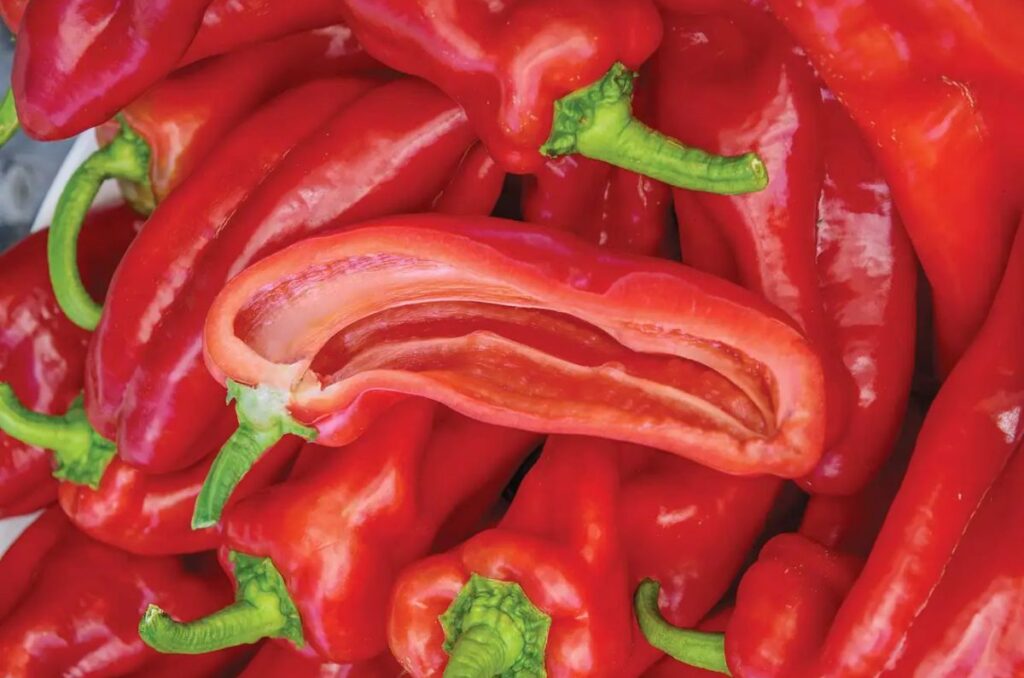
9. PeppiGrande Red
This interesting and innovative new variety is the first seedless sweet pepper. That’s right, there are zero seeds in these peppers.
It’s great for roasting and fresh eating, especially considering you won’t have to worry about the seeds.
The fruits are about 5-6 inches long, growing on plants that are 30-34 inches tall and 24-30 inches wide.
Days to maturity: 80-90
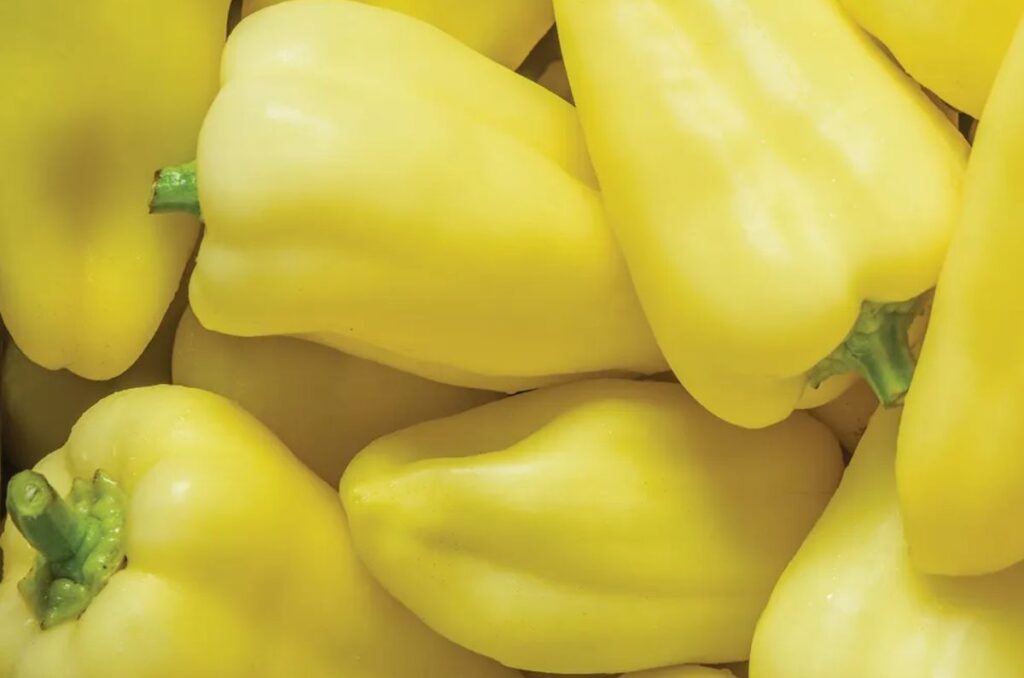
10. Slovana
Another beautiful sweet pepper variety that produces a ton of cone-shaped fruits.
The peppers are a bright neon yellow colour and they have a rich flavour and delicate sweetness. They’re great eaten fresh, grilled, or roasted.
Plants grow to 17-26 inches tall and 22-26 inches wide, with 2-6 inch fruits.
Days to maturity: 65-70
Which Sweet Pepper Should I Grow?
After reading about all these varieties, I understand that you might still be confused or overwhelmed on which one to grow.
So make sure to choose a variety that is easy to grow, produces quickly, and produces a lot.
Based on that, I would choose Gypsy or Long Tall Sally. These varieties are fairly easier to grow and they produce a ton of peppers very quickly.
If you want something different or interesting, then try PeppiGrande. Like I said, this variety is seedless, so it’ll be very interesting to grow and eat.
If you just want a classic sweet pepper, then try Emerald Giant or Great Stuff. These are the typical bell peppers and perfect for most use cases.
Do Sweet Pepper Seeds Need a Heat Mat to Germinate?
Another thing that beginner gardeners get confused with is if they should use a heat mat to germinate sweet pepper seeds.
Obviously they know that hot peppers need a heat mat. Because they’re hot, they need to be hot, right?. I don’t know what the reasoning is.
But for some reason, everybody knows that spicy peppers need a heat mat, but not that sweet peppers need one as well.
So I’ll tell you, yes, sweet peppers need a heat mat to germinate as well.
Peppers in general need to be in temperatures around 24-27°C (75-82°F) to germinate evenly. Of course, they can germinate without it, but we want what’s optimal.
So use a high-quality heat mat for your sweet peppers and the germination rates will increase.
Frequently Asked Questions
Yes, all bell peppers are sweet. True bell peppers will have no or undetectable levels of capsaicin. However, some cheap green bell varieties might taste a little bit grassy or bitter.
From this list, the sweetest pepper variety might be Thunderbolt or Tangerine Dream.
It really depends on the variety. For example, if the peppers are much larger, like a bell pepper, then you might only get 5-10 peppers throughout the season. But for smaller peppers, you can get at least 30-50 peppers per plant.
Sweet peppers should always be harvested when they reach their full colour and size. This is when they have the best and sweetest flavour.
Even More Gardening Ideas
Here are a few more posts to get the ball rolling in your garden!
- How to Grow Broccoli the RIGHT Way (What People Get Wrong)
- 3 DIY Pea Trellis Ideas that Actually WORK
- Compost vs. Manure: Which One’s Better for Your Garden?
If you liked this article, make sure to share it with your friends and family members who are also looking to sharpen their gardening skills. Also, consider signing up for our email newsletter; don’t worry, we won’t send you spam, just fresh gardening ideas every week!
If you want to learn more about vegetable gardening, make sure to check out what I’m doing on Facebook, YouTube, and Pinterest.
Pin this post for later:
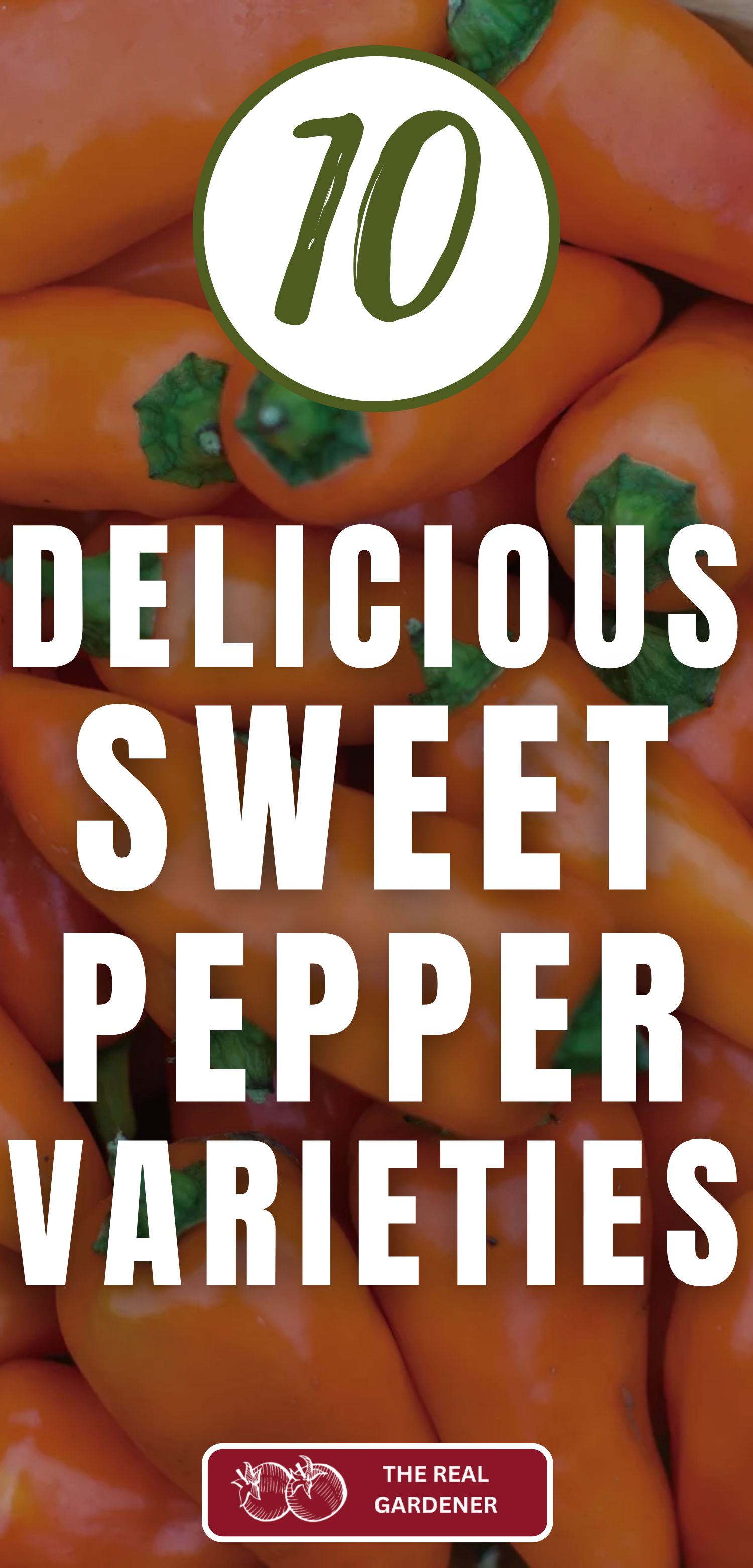
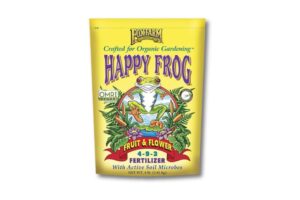
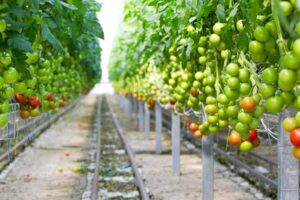
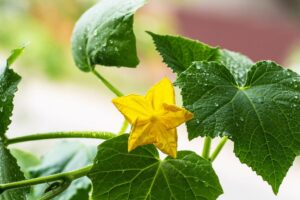
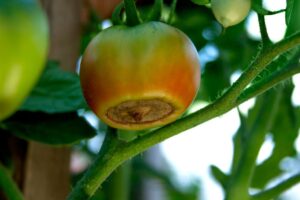
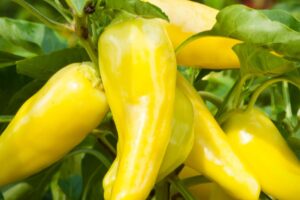
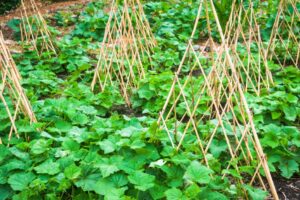

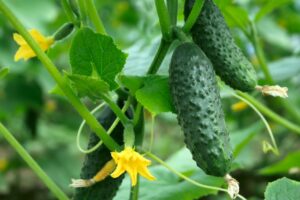
Leave a Reply